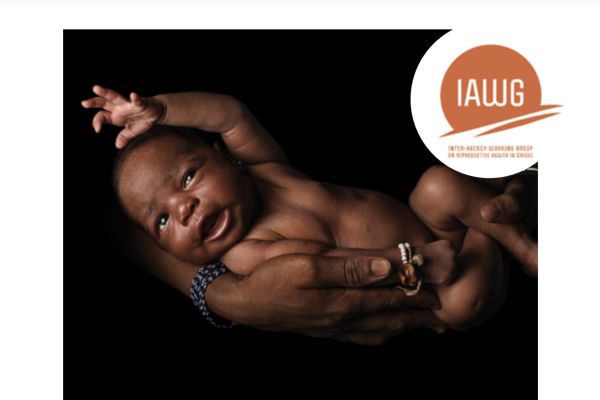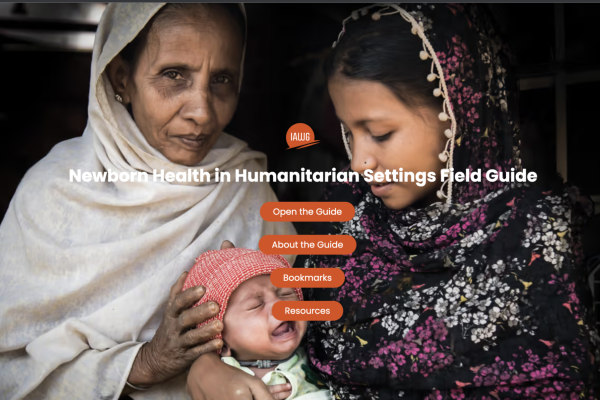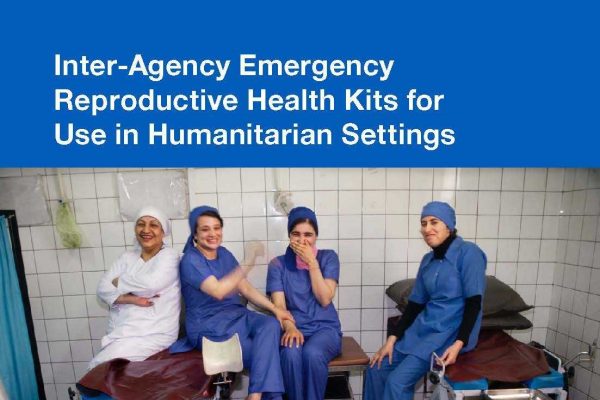The reproductive health officer implements the Minimum Initial Service Package (MISP) for Sexual and Reproductive Health (SRH) checklist to monitor service provision in each humanitarian setting. This document is available in English and French for your use and reference.
Resources
For each unit, you will need the Participant Workbook, the Facilitator’s Guide, and a slide presentation. Some units also require additional materials available on the unit pages.
For this training, you will need the following resources available from our partners:
Respectful Care: a Tool for Healthcare Workers
White Ribbon AllianceSupported by the USAID-funded Health Policy Project, White Ribbon Alliance (WRA) and Medical Aid Films (MAF) have worked together to create this animation on Respectful Maternity Care (RMC) to prepare healthcare workers in Africa to treat their patients respectfully, according to the seven points of the RMC Charter.
Bleeding After Birth
Global Health MediaAll birthing parents lose some blood after birth. Some, however, lose too much blood. This video will show how to recognize when a patient is bleeding too much, and how to give first care for the three main causes: a soft uterus, tissue left inside the uterus and tears.
How to Use the Uterine Balloon Tamponade
Medical Aid FilmsVideo about how to use the uterine balloon tamponade.
Inserting an IV
Global Health MediaThis film shows how to insert an IV into the tiny vein of a newborn. It illustrates gathering supplies, finding a good vein, applying a tourniquet, the insertion technique, taping and splinting the IV, and administering medication.
Using an Anti-Shock Garment
Global Health MediaAn anti-shock garment is a stretchy wrap that stabilizes a woman in shock from postpartum hemorrhage by applying pressure to her lower body and abdomen. This device adds time to seek treatment – and this can save a woman’s life. This video will show how to put the garment on and how to remove it safely.
Severe Pre-Eclampsia, Childbirth Series
Global Health MediaPre-eclampsia is a serious problem that can occur in the last half of pregnancy through two weeks after birth. It can cause convulsions or strokes and can be life-threatening for both woman and baby. This video shows how to determine if a woman has severe pre-eclampsia and how to manage her first care.
Taking a Blood Pressure
Global Health MediaIn pregnancy, high blood pressure may be a sign of pre-eclampsia and can also result in a baby being born too soon or too small. Measuring blood pressure may seem like a simple skill that any health provider should know how to do correctly—but there are many fine points that can improve the accuracy. This video covers what blood pressure numbers mean and demonstrates the fine points of checking blood pressure accurately.
Helping Babies Breathe at Birth
Global Health MediaA newborn who doesn’t breathe at birth needs help immediately. This video, using live footage, shows the basic steps of newborn resuscitation using the internationally renowned Helping Babies Breathe guidelines.
This brief describes 10 key principles for effective, evidence-based learning, and highlights two examples of Jhpiego programs putting these principles into action.
References
Before teaching the course, facilitators are advised to familiarize themselves with the following resources and job aids:
Helping Babies Breathe Second Edition Facilitator Flip Chart
Helping Babies Breathe, American Academy of PediatricsProvides an overview of updates made to each of the HBB 2nd Edition materials – Action Plan, Facilitator Flip Chart, and Provider Guide – that clearly delineates the changes between HBB 1st Edition and HBB 2nd Edition.
Helping Babies Survive
American Academy of PediatricsHelping Babies Survive is a growing suite of evidence-based, hands-on programs developed to reduce neonatal mortality in resource-limited environments. Programs are supported and implemented by many global partners including the US Agency for International Development (USAID), Save the Children, Laerdal Global Health, Latter-day Saint Charities, and Johnson & Johnson. Together, the HBS programs address the three most common causes of preventable neonatal deaths: complications during childbirth, complications from preterm birth, and neonatal infections.
The 2018 Field Manual provides evidence-based information about the application and adaptation of global sexual and reproductive rights or human rights standards in humanitarian settings. Available in English, Arabic, French, and Spanish.

Manual: Newborn Care Supply Kits for Humanitarian Settings
IAWG | UNICEF, Save the Children, World Health OrganizationTo complement the RH Kits, which do not provide the full range of supplies, equipment and drugs to support implementation of priority newborn care services, the Newborn Supply Kits for Humanitarian Settings (Newborn Kits) were developed.

Newborn Health in Humanitarian Settings Field Guide
Save the Children, UNICEF, WHO, IAWGThis Field Guide is a companion to the Inter-Agency Field Manual on Reproductive Health in Humanitarian Settings (2018), providing information related specifically to newborn care during the neonatal period (days 0-28 of life). It has been designed as an enhancement to national strategies and programs aimed at improving the lives of newborns and their mothers, and to strategies such as the Every Newborn Action Plan (ENAP).

The Helping Mothers Survive Secretariat aims to ensure that women and newborns worldwide receive high-quality care by equipping health professionals with the knowledge and skills they need to succeed.
Newborn Health Resources: Trainings and Tools for Improving Newborn Health in Humanitarian Settings
Healthy Newborn NetworkIn 2018, the Global Health Cluster lead by the World Health Organization (WHO) conducted a capacity survey of Global Health Cluster partners to capture information on partners’ self-assessment of their technical, operational, and coordination capacities. The results showed that most international and national partners reported a lack of capacity and expertise to provide maternal and newborn health (MNH) services. Less than half reported an ability to provide Basic Emergency Obstetric and Neonatal Care (BEmONC) and Comprehensive Emergency Obstetric and Neonatal Care (CEmONC) at primary and secondary level respectively, and only 42% of the international partners and 50% of the national partners reported providing Essential Newborn Care (ENC).
Inter-Agency Reproductive Health Kits 6th Edition - Manual
IAWG and UNFPA
This manual is geared toward midwives and doctors at district-level facilities managing complications during pregnancy, childbirth, and post-natal care. This edition includes updated WHO recommendations for emergency obstetric and newborn care.
Before taking the course, participants are advised to take the MISP Distance Learning Module.
Feedback on the Training Materials
The IAWG Training Partnership Initiative is interested in hearing from you. Please share any questions or feedback to info.iawg@wrcommission.org regarding the training materials and their use in your context.